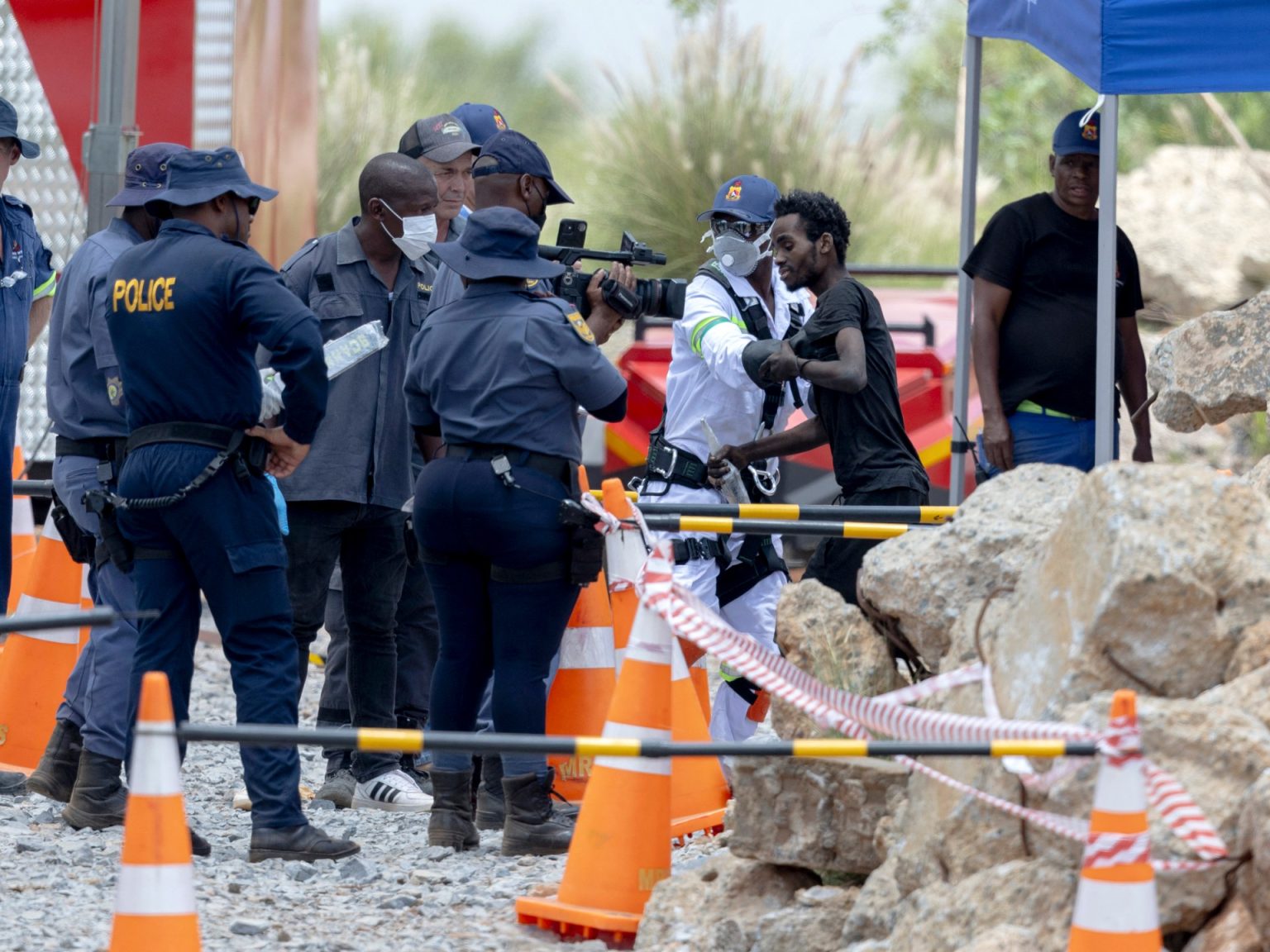The Stilfontein gold mine disaster, located approximately 150 kilometers southwest of Johannesburg, South Africa, has unfolded as a complex tragedy intertwining illegal mining, desperate survival, and a controversial government response. Over two days of rescue operations, authorities have extracted 36 bodies and 82 survivors from the depths of the mine, a grim tally that is expected to rise significantly as the operation continues. A miners’ rights group estimates hundreds more survivors and dozens more bodies remain trapped underground, painting a harrowing picture of the conditions within the mine shaft. The survivors, many of whom are believed to be undocumented immigrants from other African countries, now face charges of illegal mining, trespassing, and immigration violations, with two individuals facing additional charges related to gold possession.
The government’s approach to the Stilfontein situation has been a source of contention. Prior to the rescue operation, authorities implemented a months-long siege, cutting off food and water supplies to the mine in an attempt to force illegal miners to the surface and apprehend them. This tactic, part of a larger crackdown on illegal mining dubbed “Operation Vala Umgodi” (Close the Hole), has drawn sharp criticism from human rights organizations and local communities. The government defends its actions, characterizing illegal mining as a “war on the economy” and citing the significant financial losses attributed to the illicit precious metals trade. Mining Minister Gwede Mantashe estimated these losses to be around $3.17 billion last year. The government’s initial refusal to provide aid culminated in court orders, first permitting volunteer assistance and subsequently mandating a state-led rescue operation.
The rescue operation itself is a challenging undertaking. Rescuers are utilizing a metal cage to retrieve survivors and bodies from a shaft extending over two kilometers underground. The grueling process is expected to span several days, with police committing to daily updates on the numbers of recovered individuals. The conditions within the mine, as depicted by footage released by a miners’ rights group, are dire. The footage reveals skeletal survivors and corpses, highlighting the desperate circumstances faced by those trapped underground. This tragedy underscores the perilous nature of illegal mining and the complex web of factors contributing to it.
Illegal mining in South Africa often occurs in abandoned mines deemed no longer commercially viable for large-scale operations. These sites, however, still contain residual minerals, attracting unlicensed miners, often impoverished migrants, who risk their lives to extract these remaining resources. Driven by economic hardship and limited opportunities, these individuals operate in extremely dangerous conditions, facing the constant threat of collapses, toxic fumes, and other hazards. The Stilfontein incident tragically highlights the human cost of this illicit industry. The desperate measures taken by these miners, facing both the dangers inherent in the work and the government’s crackdown, speak to the broader socio-economic challenges that fuel this dangerous practice.
The government’s “Vala Umgodi” operation, while aimed at curbing the economic losses associated with illegal mining, has raised concerns about its handling of the humanitarian aspects of the situation. Critics argue that the initial denial of aid exacerbated the suffering of those trapped within the mine. The subsequent court orders compelling the government to launch a rescue operation underscore the tension between law enforcement and humanitarian concerns. The decision to charge survivors with various offenses, including illegal mining and immigration violations, further complicates the narrative. While the government seeks to uphold the law, critics question the morality of prosecuting individuals who were driven to such desperate measures by economic hardship.
The Stilfontein disaster prompts a broader conversation about the root causes of illegal mining and the challenges of addressing it. The lure of precious metals and the desperation of poverty create a potent mix that drives individuals to risk their lives in abandoned mines. Tackling this issue requires a multifaceted approach that goes beyond simply sealing off mines and prosecuting those involved. Efforts to address poverty, create economic opportunities, and improve migration management are crucial to mitigating the drivers of illegal mining. Furthermore, the government must balance its focus on law enforcement with a commitment to protecting the human rights and well-being of all individuals, regardless of their legal status. The tragic events at Stilfontein serve as a sobering reminder of the human cost of illegal mining and the urgent need for sustainable solutions.

